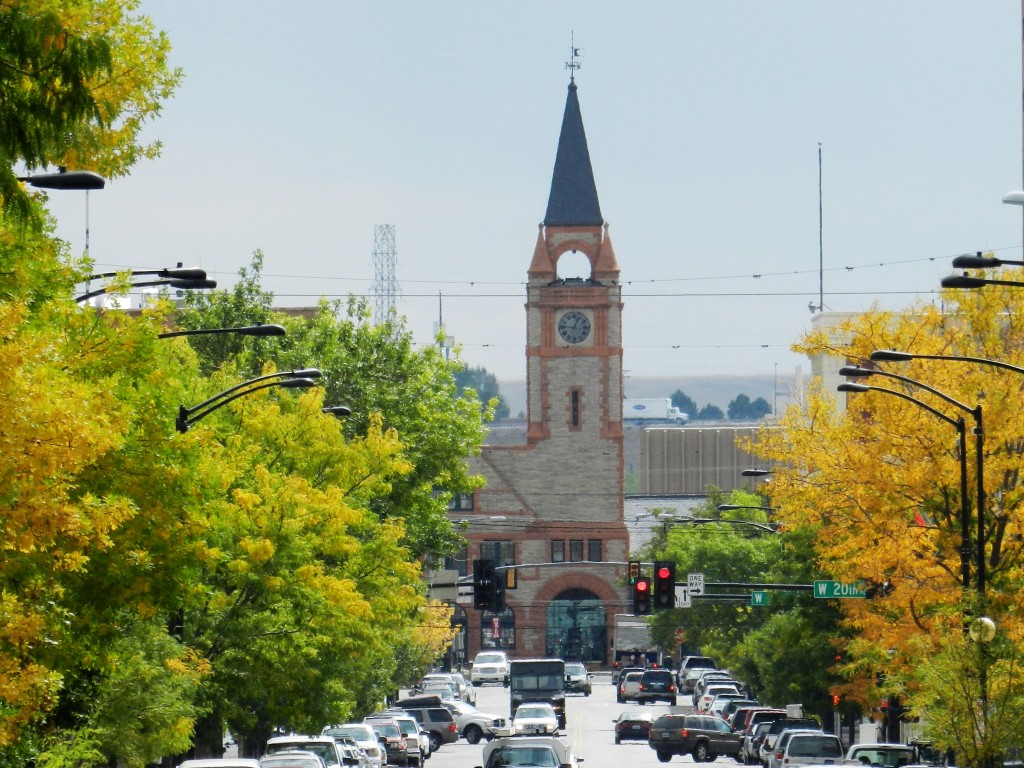» posted on Tuesday, September 25th, 2012 by Linda Lou Burton
Pioneering Trees
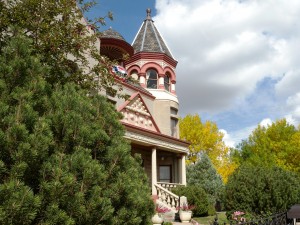 Linda Burton posting from Cheyenne, Wyoming – Nannie Steele arrived in Cheyenne in the midst of a sandstorm in September of 1876. A strong woman who rode with the cowboys and was acquainted with Buffalo Bill, she made this observation in a letter — “there are only twelve trees in this town.” The next year however, things began to change. John Talbot, often referred to as Major, was an early settler in Cheyenne, claiming 160 acres and opening the Talbot House at 16th and Thomas, one of the first hotels. He built a large house on the corner of 27th and Snyder, with a third-floor ballroom, and eventually, lavishly landscaped grounds. It is recorded that in 1877 he ordered 20,000 young trees and willow cuttings from Nebraska, his former home, for planting in Cheyenne. Early pioneers planted and hand-watered those first trees along the streets and in the parks of Cheyenne; by the early 1900’s Cheyenne was known as “The City of Trees.”
Linda Burton posting from Cheyenne, Wyoming – Nannie Steele arrived in Cheyenne in the midst of a sandstorm in September of 1876. A strong woman who rode with the cowboys and was acquainted with Buffalo Bill, she made this observation in a letter — “there are only twelve trees in this town.” The next year however, things began to change. John Talbot, often referred to as Major, was an early settler in Cheyenne, claiming 160 acres and opening the Talbot House at 16th and Thomas, one of the first hotels. He built a large house on the corner of 27th and Snyder, with a third-floor ballroom, and eventually, lavishly landscaped grounds. It is recorded that in 1877 he ordered 20,000 young trees and willow cuttings from Nebraska, his former home, for planting in Cheyenne. Early pioneers planted and hand-watered those first trees along the streets and in the parks of Cheyenne; by the early 1900’s Cheyenne was known as “The City of Trees.”
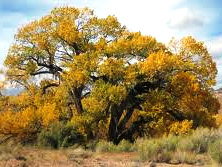 The “Plains Cottonwood” was the tree of choice; a good pioneer tree for converting grass prairie land into urban woodland. Plains Cottonwoods are hardy up to 7,000 feet (Cheyenne is 6,098) and although they are fast-growing, they also are fairly short-lived. But that isn’t all bad; other slower-growing trees that have a longer life can be planted in the shade of cottonwoods, and in soils modified by cottonwoods.
The “Plains Cottonwood” was the tree of choice; a good pioneer tree for converting grass prairie land into urban woodland. Plains Cottonwoods are hardy up to 7,000 feet (Cheyenne is 6,098) and although they are fast-growing, they also are fairly short-lived. But that isn’t all bad; other slower-growing trees that have a longer life can be planted in the shade of cottonwoods, and in soils modified by cottonwoods.
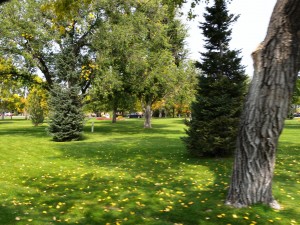 The Cheyenne Cottonwood Society advises planting a wide diversity of tree species for a healthy urban forest. Cheyenne has a greater variety of trees today, but it has lost much of its large aging cottonwood forests and majestic boulevard canopies. The Society identifies a great need along Cheyenne roadways and in Cheyenne neighborhoods to replant the stately Plains Cottonwood.
The Cheyenne Cottonwood Society advises planting a wide diversity of tree species for a healthy urban forest. Cheyenne has a greater variety of trees today, but it has lost much of its large aging cottonwood forests and majestic boulevard canopies. The Society identifies a great need along Cheyenne roadways and in Cheyenne neighborhoods to replant the stately Plains Cottonwood.
Last spring, the Greater Cheyenne Chamber of Commerce’s Leadership Cheyenne classes of 2011 and 2012 spearheaded an effort to plant 35 Plains Cottonwoods in South Cheyenne Community Park. It was a multi-group effort, with 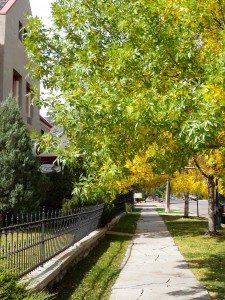 Cheyenne Light, Fuel and Power, Rocky Mountain Landscape, Cheyenne’s urban forestry department and the Cheyenne Cottonwood Society volunteering money and resources for the project. Paula Qualls, a member of the Society, stood by to watch the first of the trees going into the ground; her great-grandfather helped plant some of Cheyenne’s oldest trees during the 1800’s. “I know he would be ecstatic to see this,” she said.
Cheyenne Light, Fuel and Power, Rocky Mountain Landscape, Cheyenne’s urban forestry department and the Cheyenne Cottonwood Society volunteering money and resources for the project. Paula Qualls, a member of the Society, stood by to watch the first of the trees going into the ground; her great-grandfather helped plant some of Cheyenne’s oldest trees during the 1800’s. “I know he would be ecstatic to see this,” she said.
All these tree-planting efforts over the years have paid off beautifully. Drive around Cheyenne and see the trees; walk the shaded grounds of Holliday Park (the geese love it there) and the peaceful (and informational) Botanical Gardens. Note the sheltering trees overhanging the hundred-year-old slate sidewalks in some of the older neighborhoods. Pick up a guide in the state capitol that tells about the capitol’s trees; in the early 1990’s the Wyoming Federation of Garden Clubs placed identification markers on many of them (from the capitol steps look beyond the historic Train Depot to the non-treed hills).
Nannie Steele should see Cheyenne today.
Cottonwood Factoids
- Wyoming named the Plains Cottonwood as the official state tree in 1947.
- Members of the willow family, and related to poplars and aspens, cottonwoods are named for the cottonlike mass of hairs surrounding their seeds.
- Most nurseries only sell male cottonwoods, although it is legal to plant both male and female trees.
- Birds, and squirrels, and people who like to play in big piles of leaves love cottonwoods.
Cheyenne Urban Forestry http://www.cheyennetrees.com/faq.html
Wyoming State Forestry Division http://slf-web.state.wy.us/oldsite/forestry.aspx

